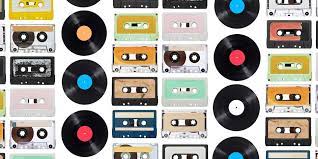
Music has always been a universal language, telling stories, expressing emotions, and reflecting the culture of its time. Over the decades, music genres have evolved dramatically—shaping generations and influencing the way we play and listen today.
At Family Music School, we believe that exploring the history and evolution of music helps students develop a deeper appreciation for their craft while encouraging creativity and self-expression.
History of Music Genres by Decade
1920s – The Jazz Age
The 1920s are often called the Jazz Age—a time when music came alive with energy, improvisation, and swing. Jazz wasn’t just a genre; it was a movement that transformed dance halls and clubs, inspiring freedom of expression and laying the foundation for modern music.
1950s – Rock & Roll Revolution
The 1950s shook the world with the birth of rock and roll. Legends like Elvis Presley and Chuck Berry brought youthful energy, catchy rhythms, and rebellious spirit to the stage. Rock & roll became the voice of a generation and paved the way for countless subgenres in the decades to come.
1970s – Disco, Funk & Soul
The 1970s brought dazzling disco balls, groovy funk basslines, and the heartfelt sound of soul. These genres made music a vibrant part of social life, filling dance floors worldwide. More than just entertainment, disco and funk symbolized freedom, individuality, and togetherness.
1980s – Synths & Pop Power
In the 1980s, technology began to transform sound. With the rise of synthesizers and drum machines, music became futuristic and bold. Pop icons like Michael Jackson and Madonna dominated charts, while rock and heavy metal created loyal fan bases. This decade proved that music could be both global and deeply personal.
1990s – Hip-Hop & Alternative Rock
The 1990s were all about authentic expression. Hip-hop grew into a cultural movement, giving voice to untold stories and shaping fashion, art, and identity. Meanwhile, alternative rock and grunge connected with listeners through raw, emotional lyrics and powerful guitar-driven sounds.
2000s & Beyond – Modern Music Trends
In the 2000s and beyond, genres began to blend like never before. Pop merged with hip-hop, EDM powered festivals, indie music found new audiences, and streaming platforms made every style instantly accessible. Today’s music is a rich mix of influences, proving that creativity has no boundaries.
Why Learning Music History Matters for Students
Understanding the evolution of music genres is more than just studying history—it’s about finding inspiration. By exploring the sounds of different eras, students at Family Music School can:
-
Build a deeper appreciation for cultural diversity in music
-
Learn the unique techniques behind each style
-
Develop versatility as musicians
-
Discover their own creative voice rooted in tradition yet open to innovation
We encourage every student to experiment with a variety of genres, from classical and jazz to rock, pop, and beyond, so they not only learn to play music but also understand its story.